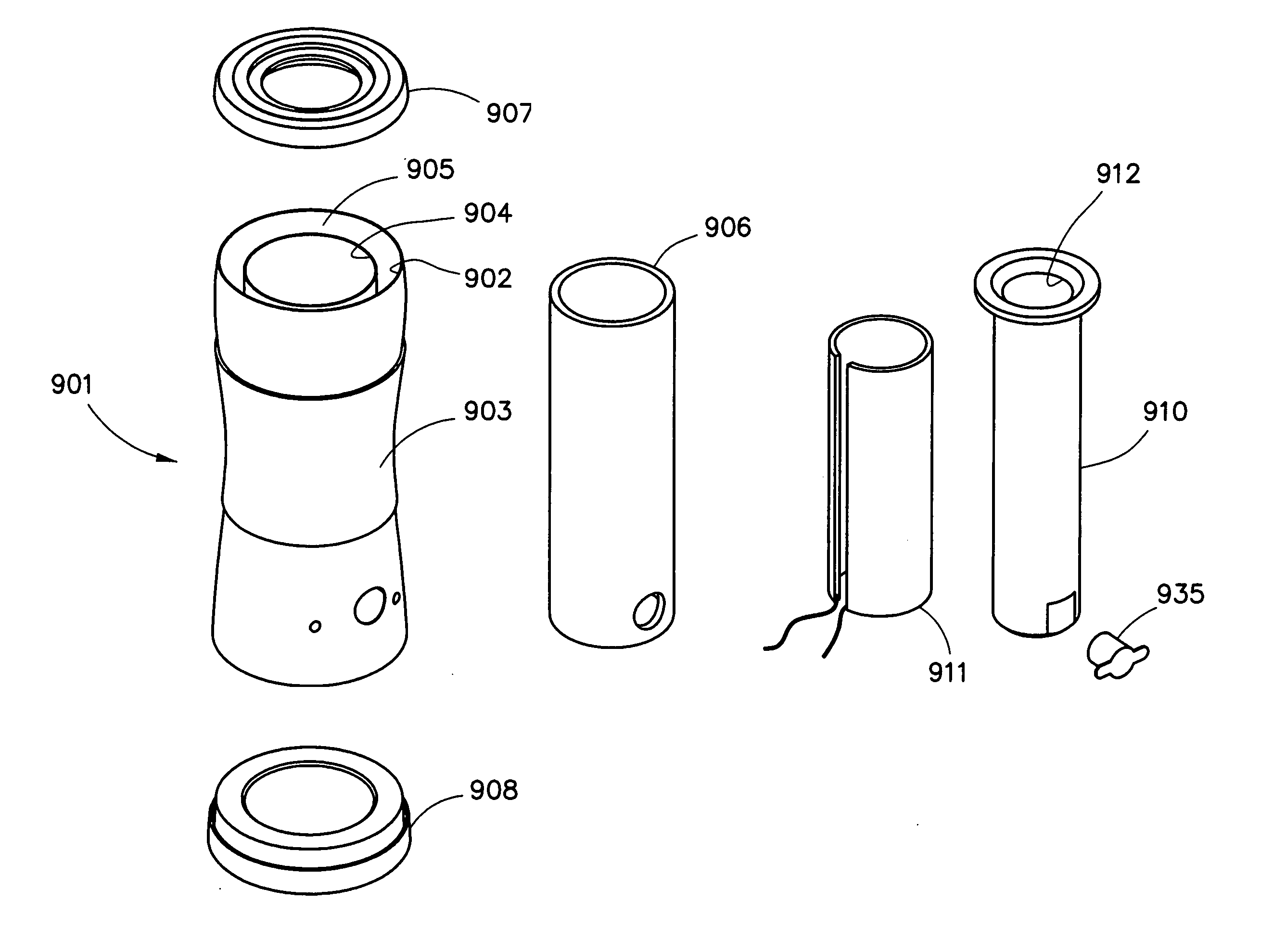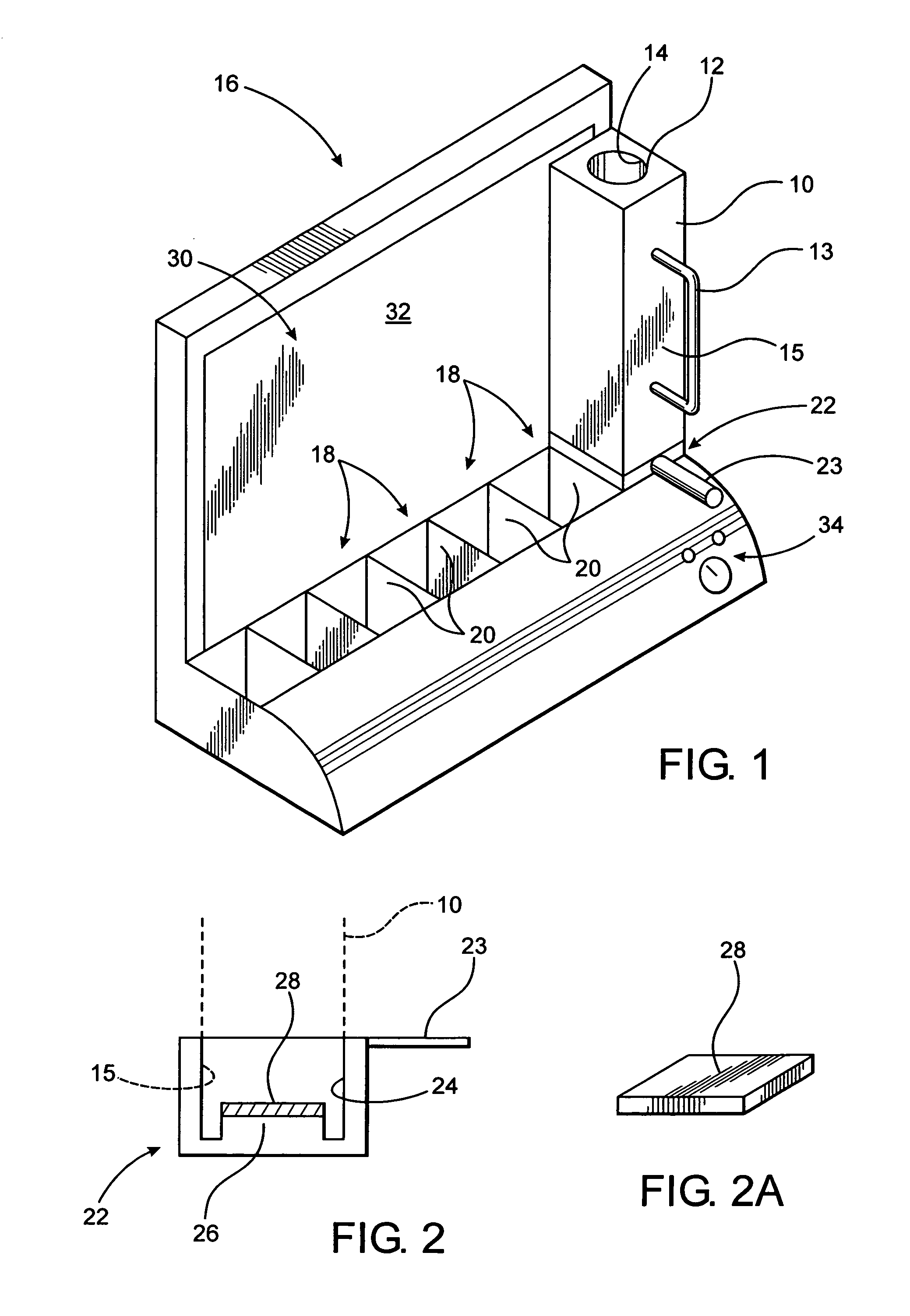Assembly for cooking elongated food products
a technology of elongated food products and assembly parts, which is applied in the direction of ovens, ovens, bakery products, etc., can solve the problems of general limited “food product shaping” and achieve the effect of facilitating the formation of cooked food products
- Summary
- Abstract
- Description
- Claims
- Application Information
AI Technical Summary
Benefits of technology
Problems solved by technology
Method used
Image
Examples
example 1
Sausage and Egg Wrap
[0138]With reference to FIGS. 34A through 34E, the following is an example of how the present invention is utilized to prepare a sausage product wrapped in a layer of cooked egg. As shown in FIG. 34A, the mold chamber 12 is initially empty, with fill indicator line 12″ clearly visible therein. Preheat the mold chamber 12 to a temperature of between about 200° and 275° Fahrenheit, at which time, the inside of the mold chamber 12 may be coated with a non stick cooking spray. Add one or more egg into the mold chamber 12 until the volume of uncooked egg is about half way to the level of the fill indicator line 12″, as shown in FIG. 34B. It is understood that more than one fill indicator line 12″ may be provided in the mold chamber 12 so as to provide an indication of the proper fill level for any of a wide variety of liquid, semi-liquid, semi-solid and / or solid food compositions therein. A filling structure 72 as disclosed above may be inserted into the upper open en...
example 2
“Egg” Roll
[0139]As before, the mold chamber 12 is preheated prior to the addition of one or more eggs to the mold chamber 12, and also as in Example 1, filling structure 72 may be inserted into the upper open end of mold chamber 12 to facilitate adding one or more egg into the mold chamber 12, allowing them to flow freely into the preheated mold chamber 12 up to the fill indicator line 12″. In at least one embodiment, the mold chamber 12 is preheated to a temperature of between about 200° and 275° Fahrenheit, at which time, the inside of the mold chamber 12 may be coated with a non stick cooking spray. As noted in Example 1, the egg roll product will rise out from the mold chamber 12 as cooking progresses, and the mold housing 10 and / or mold chamber 12 may be inverted to remove the cooked egg roll shaped product, or tongs may be utilized to gently remove it the remainder of the way from the mold chamber 12 after is has fully cooked, which will be between about 6 to 9 minutes. FIG. 3...
example 3
Marbled “Egg” Roll
[0141]Preheat the mold chamber 12 to a temperature of between about 200° and 275° Fahrenheit, at which time, the inside of the mold chamber 12 may be coated with a non stick cooking spray. Separate one or more eggs into egg yolks and egg whites, and add the egg yolks to the preheated mold chamber 12, and then add the separated egg whites on top up to the fill indicator line 12″. As in the previous examples, the “marbled” egg product will rise from the mold chamber 12 and is removed upon completion of the cooking as above, in about 6 to 9 minutes. FIG. 38 is illustrative of “marbled” eggs prepared in accordance with the present example utilizing the assembly as disclosed herein, having distinct and segregated cooked egg yolks and cooked egg whites randomly dispersed throughout.
PUM
 Login to view more
Login to view more Abstract
Description
Claims
Application Information
 Login to view more
Login to view more - R&D Engineer
- R&D Manager
- IP Professional
- Industry Leading Data Capabilities
- Powerful AI technology
- Patent DNA Extraction
Browse by: Latest US Patents, China's latest patents, Technical Efficacy Thesaurus, Application Domain, Technology Topic.
© 2024 PatSnap. All rights reserved.Legal|Privacy policy|Modern Slavery Act Transparency Statement|Sitemap



